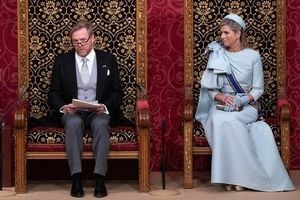On a brisk Monday morning, September 15, 2025, the waters off Jeju Island in South Korea became the stage for a major display of military cooperation. The United States, South Korea, and Japan kicked off a joint aerial and naval exercise, dubbed Freedom Edge, in a move that both showcased trilateral unity and drew sharp condemnation from North Korea. The exercise, scheduled to run until Friday, September 19, marks what U.S. Indo-Pacific Command has called "the most advanced demonstration of trilateral defense cooperation to date."
Freedom Edge isn’t just a routine drill. According to the South Korean Ministry of Defense, the aim is clear: bolster combined operational capabilities across maritime, aerial, and cyber domains to counter what officials describe as the "growing nuclear and ballistic threats from North Korea." The exercise features a formidable array of assets, including U.S. Marines and Air Force aircraft, enhanced ballistic missile and air defense drills, medical evacuations, and maritime operations training. It's a show of force meant to send a message not just to Pyongyang, but to the region at large.
Just a day before the exercise began, South Korean Foreign Minister Cho Hyun met with U.S. Deputy Secretary of State Christopher Landau in Seoul. The two posed for photos—a symbolic gesture underscoring the close diplomatic ties between Washington and Seoul. The meeting, as reported by Yonhap, highlighted the ongoing efforts to maintain a united front amid rising tensions on the Korean Peninsula.
But not everyone is applauding. North Korea wasted no time in denouncing the drills. Kim Yo Jong, the powerful sister of North Korean leader Kim Jong-un, issued a scathing statement through state media, calling the exercise an "irresponsible demonstration of force." She went a step further, warning, "The reckless show of force they have enacted in real action near the Democratic People’s Republic of Korea, which is the wrong place, will inevitably cause them harm." Kim Yo Jong’s words, as reported by The Associated Press, reflect the regime’s long-standing view that such exercises are provocative and destabilizing.
North Korea’s ire wasn’t reserved solely for Freedom Edge. Kim Yo Jong also took aim at a recent U.S.-South Korea simulation exercise called Iron Mace, which explores the integration of U.S. nuclear capabilities with South Korean conventional forces. The simulation is designed to strengthen deterrence in the face of North Korean threats, but Pyongyang sees it as further evidence of what it calls a "hostile posture" from Seoul and Washington. The U.S. and South Korean militaries have not publicly confirmed all the details of Iron Mace, but its timing alongside Freedom Edge has only added fuel to the fire.
This cycle of military exercises and North Korean condemnation is hardly new. As The Associated Press notes, Pyongyang has a history of responding to joint drills by its rivals with its own military demonstrations or weapons tests. The pattern is familiar: as the U.S. and its allies flex their muscles, North Korea rattles its own saber, raising the stakes and keeping the region on edge.
Yet, the context in 2025 is more complicated than ever. Since Russia’s invasion of Ukraine, North Korea has taken steps that have alarmed officials in Seoul, Washington, and beyond. Kim Jong-un has reportedly deployed thousands of North Korean soldiers and shipped significant quantities of artillery and ballistic missiles to support Russian military operations. This deepening military partnership between Pyongyang and Moscow represents a significant shift in the region’s security dynamics.
Diplomatically, North Korea has also been busy forging closer ties with China. Earlier this month, Kim Jong-un traveled to China, where he appeared alongside Chinese President Xi Jinping and Russian President Vladimir Putin at a massive military parade. The event was more than a photo opportunity—it signaled a new phase in North Korea’s efforts to boost its diplomatic clout and align itself with nations facing off against the United States and its allies.
Despite repeated calls from Seoul and Washington to return to the negotiating table and gradually reduce its weapons programs, North Korea has steadfastly refused. Instead, Kim Jong-un’s regime has doubled down on its strategy of military posturing and international outreach to sympathetic powers. The message from Pyongyang is clear: it will not be coerced or isolated, and it is prepared to push back—militarily and diplomatically—against what it sees as external threats.
The stakes are high for all parties involved. For South Korea, the joint exercises are a necessary response to what it perceives as an existential threat from the North’s advancing missile and nuclear programs. The South Korean Ministry of Defense has emphasized the need to strengthen operational readiness and deterrence, particularly as North Korea continues to develop new weapons and expand its military ties abroad.
For the United States, Freedom Edge is about more than just regional security. It’s a signal to allies and adversaries alike that Washington remains committed to the Indo-Pacific, even as global attention is often drawn elsewhere. The inclusion of Japan in the drills further underscores the importance of trilateral cooperation in countering shared threats and maintaining stability in a rapidly changing security environment.
Japan’s participation is especially notable, given its own concerns about North Korean missile launches and the broader implications of North Korea’s deepening relationships with Russia and China. For Tokyo, the exercise is both a reassurance and a reminder of the challenges that lie ahead. The Japanese government has consistently emphasized the need for close coordination with the U.S. and South Korea to address the North Korean threat.
Meanwhile, North Korea’s response remains unpredictable. The regime has a well-documented history of using military exercises by its rivals as a pretext for its own provocations, whether in the form of missile tests or other demonstrations of force. How Pyongyang will react in the days and weeks following Freedom Edge is anyone’s guess, but few expect a period of prolonged calm.
In the background, the broader geopolitical chessboard is shifting. As North Korea draws closer to Russia and China, the traditional lines of confrontation on the Korean Peninsula are becoming increasingly entangled with global rivalries. The outcome of this latest round of exercises may not be immediately clear, but one thing is certain: the stakes for peace and security in Northeast Asia have rarely been higher.
As Freedom Edge unfolds off the coast of Jeju, the world watches closely—not just for the maneuvers at sea and in the air, but for the signals they send to Pyongyang, Beijing, Moscow, and beyond. In this tense and unpredictable environment, every move counts, and the margin for error feels smaller than ever.



